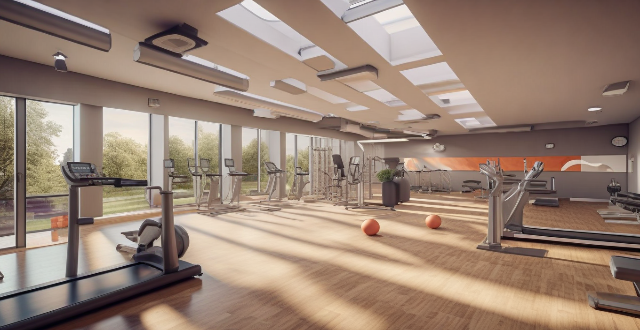Virtual reality is revolutionizing sports training and performance enhancement by offering a safe, controlled environment for skill development, tactical analysis, mental preparation, rehabilitation, and team building. Athletes can practice skills in realistic simulations, receive immediate feedback, repeat movements without fatigue, visualize game plans, engage in interactive scenarios, analyze opponents, develop mindfulness techniques, visualize success, manage distractions, manage pain during rehabilitation, recover motor functions, receive mental health support, foster camaraderie through shared experiences, enhance communication through role playing, and promote mutual respect among diverse players. As virtual reality technology advances, it will become an integral part of future sports training programs.

Incorporating Virtual Reality into Sports Training and Performance Enhancement
Virtual reality (VR) is a rapidly evolving technology that has the potential to revolutionize sports training and performance enhancement. By immersing athletes in realistic simulations of game scenarios, VR can provide a safe and controlled environment for skill development, tactical analysis, and mental preparation. Here's how VR can be incorporated into sports training:
1. Skill Development
- Simulated Environments: VR can create realistic environments where athletes can practice their skills without the risk of injury or external distractions. For example, a basketball player can practice shooting in a virtual gym with varying levels of crowd noise and pressure situations.
- Immediate Feedback: VR systems can provide instant feedback on an athlete's technique, such as correcting their posture or movement during a golf swing or a tennis serve. This real-time feedback helps athletes make adjustments quickly and efficiently.
- Repetition Without Fatigue: In VR, athletes can repeat specific movements or plays as many times as needed without experiencing physical fatigue, allowing them to focus solely on perfecting their technique.
2. Tactical Analysis
- Visualization of Game Plans: Coaches can use VR to illustrate complex game plans and strategies to their team members, making it easier for them to understand and remember the tactics.
- Interactive Scenarios: Athletes can engage in interactive scenarios where they have to make split-second decisions based on different game situations, improving their decision-making abilities under pressure.
- Analysis of Opponents: VR can be used to analyze opponents' tactics and tendencies, allowing athletes to prepare more effectively by studying their strengths and weaknesses in detail.
3. Mental Preparation
- Mindfulness and Relaxation: VR can help athletes develop mindfulness techniques and relaxation exercises, reducing stress and anxiety before competitions.
- Visualization of Success: Athletes can visualize themselves succeeding in various aspects of their sport, reinforcing positive mental imagery and boosting confidence.
- Distraction Management: VR simulations can expose athletes to potentially distracting environments, teaching them how to maintain focus and block out distractions during actual competitions.
4. Rehabilitation and Recovery
- Pain Management: VR can be used as a form of distraction therapy, helping injured athletes manage pain during rehabilitation processes by immersing them in engaging experiences.
- Motor Function Recovery: For athletes recovering from injuries affecting motor functions, VR can provide controlled environments for gradually rebuilding muscle memory and coordination through guided exercises.
- Mental Health Support: VR can offer therapeutic applications, such as exposure therapy for athletes dealing with post-traumatic stress disorder (PTSD) or other mental health issues related to sports performance.
5. Team Building and Cohesion
- Shared Experiences: VR can create shared experiences among team members, fostering camaraderie and understanding through collective challenges and activities within virtual environments.
- Role Playing: Teammates can take on different roles within VR simulations, enhancing communication and empathy among players by experiencing each other's perspectives.
- Cultural Exchange: International teams can use VR to explore each other's cultures and customs, promoting mutual respect and appreciation among diverse players.
In conclusion, incorporating virtual reality into sports training offers numerous benefits for skill development, tactical analysis, mental preparation, rehabilitation, and team building. As this technology continues to advance, it will undoubtedly become an integral part of future sports training programs, helping athletes reach new heights in their performances.